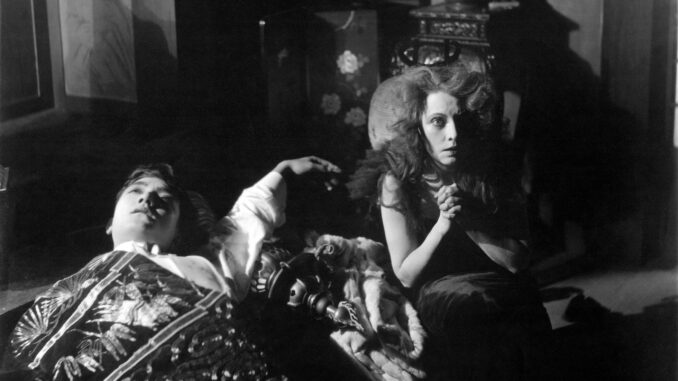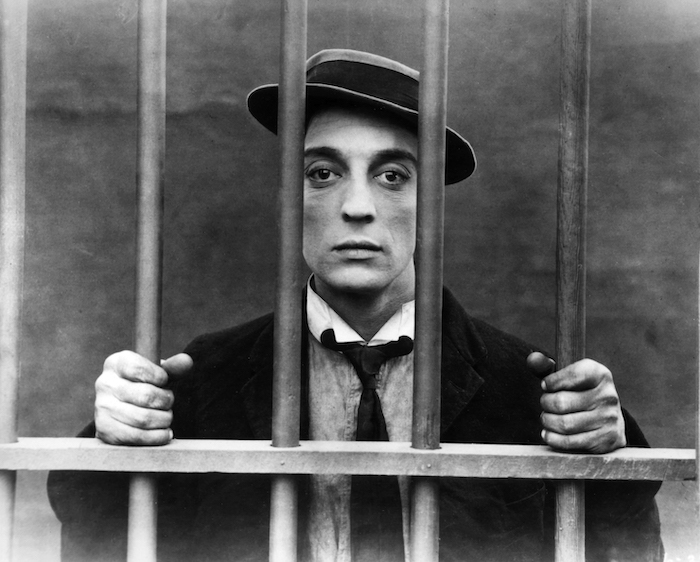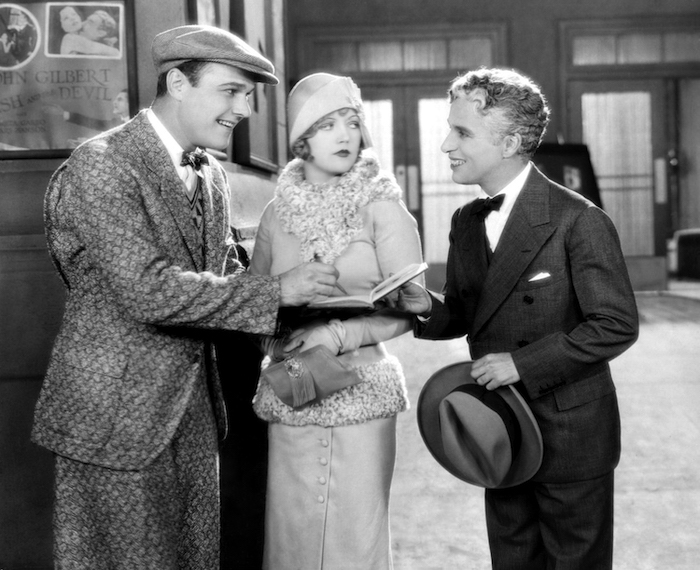
Henry Etzkowitz and Chunyan Zhou
A day of Silents offered a day-long Pass to stellar filmic events, although it was also possible to select one or a few choices from among a diverse array. In the history of human art, there are many bright and beautiful pearls inlaid. Although their art forms have been ruthlessly eliminated by the times, they always exude charm and brilliance, and silent films are one of them.

Medium as Message
Silents are an art form in their own right just as non-verbal communication, through gestures and facial signs is a distinct medium. The so-called Silent Film should not be viewed as suffering from lack of speech. A succession of proofs was offered, starting with the first event of the day, a pastiche of Buster Keaton comedies. Mechanical Mayhem, showcased the comic possibilities in devices gone awry from their intended purposes. Designed by humans, but seemingly taking off on their own, surprising their inventors and operators with their potential to make an audience, and themselves, laugh uncontrollably. Is any verbal byplay, joke or spoken routine funnier than the ludic achievements of Keaton and his peers? In a forced choice, would you select the silent or the speaking Chaplin, surely an unfair comparison since the answer is practically predetermined!

The second event featured a noted Director, famous for the repartee of his characters, so notable and distinctive that it came to one known as “the Lubitisch touch. Whereas Keaton reached the height of his artistic powers in the Silent era; Lubitsch was a paragon of the talkies. Nevertheless, he also had an unvoiced earlier era that is relatively unrecognized. The showing of Forbidden Paradise, starring Pola Negri was intended to remedy that deficit with a pantomime satirizing the Russian autocracy in an 18th century milieu. Nevertheless, Pola Negri is instantly recognizable as an insouciant 1920’s female on the way to becoming an independent human being, much like Marian Davies’ Prudence, emerging from a Quaker chrysalis, an international look and suffragette process in the making that cuts across national boundaries.

Message in the Medium
Issues of content, however, transcend both film eras. Portrayal of ethnic and racial sterotypes and the reaction against them is a red thread that runs form the Silent era into the future, with successful protest and limited reparation taking pace only recently. In The Cheat Sessue Hayakawa portrayed a Japanese art dealer who has risen socially above his expected high and is brutally cut down outsize in the curse of the film verbal or non-verbal discrimination is equally powerful, indirectly supporting their equality of the sound and un-sound film eras.

In 2022 Anna May Wong, the first Chinese American film star in Hollywood, appeared on American Quarters. She became the real focus in the festival. With her niece’s introduction, her past life and achievements are once again presented to the audience. And The Toll of The Sea (1922) ended the wonderful silence. Seventeen years old Anna May’s performance as a beautiful, brave and romantic Chinese girl, Lotus Flower, who falls in love with an American soldier Allen Carver and is rescued by the seaside. Unfortunately, the man needs to return to his motherland and says bye to his lover. As a married but single woman, Lotus suffers from lovesickness and raises her son alone. However, several years later, Allen comes back to see her with his new wife. In grief, humiliation and despair, Lotus jumps into the sea and ends her young life. Nothing is silent in this film! The girl’s name Lotus flower symbolizes purity, loyalty and devotion to love in Chinese traditional culture; free love was considered treasonous at that time, which heralds Lotus’s tragedy end and the price she paid for her brave pursuit of true love. At the same time, we can see the big difference between the Western and Eastern culture: Allen’s return with his wife is humiliation to the poor girl in Eastern culture, but in Western civilization it may be only an expression of cherishing old feelings. All of this is “said” in silence, or is it?
Coupled with music, from player piano to individual pianist to full orchestra, the Silent Film, an appellation only meaningful after the addition of speech, were movies! The heyday of Silent Cinema, from the very late nineteenth century until the “squeaks” and “squawks” of 1928 was characterized by great population movements, war on an heretofore unimaginable scale, in scale, if not intensity, urbanization and industrialization proceeding apace. Mechanical reproduction was the core of an art form accessible to virtually all, not only by the typically low price of admission but by its instantiation in a universal form of non-verbal communication, leaving relatively little need for translation, save for occasional inter-titles.

The Future of the Past
Although San Francisco affords a film society, capable of restoration as well as presentation; it may not be in the cards to have its own house, although one would optimistically like to believe a savior in the wings. The perpetuation of the Silent era’s full glory rests on a venue from that era, the Castro Theater carrying into the future in its original form. Whether the Silents are powerful enough to carry their home forward has been called into question. Plans are in the works, indeed the owners fully intend to transform the Castro into a broader entertainment venue, replacing the slanted with a flat surface and making the seats removable for a dance floor. To date, there is no deus ex machina silent film buff with deep pockets in sight to save the day and retain the Castro in its original format. We may expect at best a compromise like the Guild Theater on the Peninsula, a venue still capable of showing films but renovations have made it into something of a contemporary speakeasy, with two huge liquor bars dominating both the main floor and balcony.
San Francisco is notable for two cultural achievements not readily found elsewhere, a theater troupe dedicated to performance of the Gilbert and Sullivan Operetta Oeuvre and the San Francisco Silent Film Festival, which like the revival of vinyl records whose unique clarity of audio reproduction is not superseded by subsequent audio formats. Thus, Silent Film persists as an artistic modality in its own right, even though its practice is maintained by recuperating previous performances rather than expecting new ones. Like classic Greek drama; its manifestation is confined to a particular historical era, likely never to be renewed.
Photos are courtesy of the San Francisco Silent Film Festival

Be the first to comment